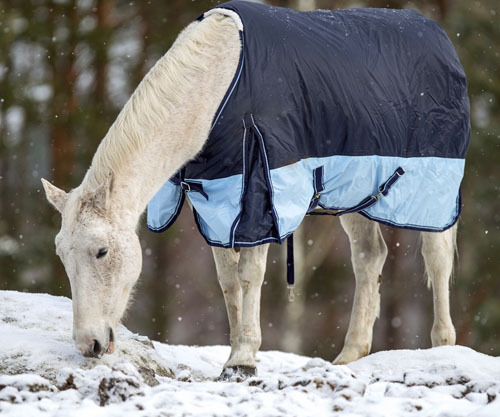equine-awareness: New Study Shows Horses Can Communicate Their Blanketing Preferences Blanket? No bl
equine-awareness:New Study Shows Horses Can Communicate Their Blanketing PreferencesBlanket? No blanket? Blanket? Oh, that frustrating inner battle on a cool day. There are many good reasons to put a blanket on your horse, but there are just as many reasons to leave it off. If only your horse could just tell you what he wanted! Actually, there might be a way to determine whether your horse wants a blanket or prefers to be naked: Cecilie M. Mejdell, PhD, of the Norwegian Veterinary Institute, and colleagues have developed a communication system with horses that allows the animal to express his desire to have a blanket on—or not.“Blanketing horses is common in our culture, but blankets are often used excessively, even into summer,” said Mejdell. Mejdell presented a study she completed with Turid Buvik, Grete Jørgensen, and Knut Boe, at the 2014 International Society for Equitation Science conference, held Aug. 6-9 in Bredsten, Denmark. “(Blankets) could be uncomfortable for the horse, and they also prevent social grooming,” she said. “So it’s important to know what the horse actually prefers.”Using a simple series of easily distinguishable printed symbols, Mejdell’s group taught 23 horses to associate symbols with certain actions. The horses learned that one symbol meant “blanket on,” another meant “blanket off,” and a third meant “no change.” Once the horses had learned the meanings (which took an average of 11 days), the researchers gave them free rein to choose symbols and rewarded them with food for their selection, regardless of which symbol they chose. The team tested the horses under a variety of weather conditions, including sun, wind, rain, and snow, in Norwegian temperatures ranging from -15°C to 20°C (5°F to 68°F).“The horses’ preferences were often very clear,” Mejdell said. Video clips presented during the presentation revealed horses quickly making a selection when the researchers presented the symbols and then standing still waiting for their choice to be carried out.Overall, the horses appeared to understand the communication system’s benefits, Mejdell said. Blanketing preferences varied from horse to horse, but on the whole cold-blooded draft-type horses chose to be blanketed less frequently than the Warmblood horses in the study. Individually, horses’ preferences seemed to be influenced by weather conditions: the colder, wetter, and windier it got outside, the more likely the horse was to choose to be blanketed.“Communication by the use of visual symbols is a promising tool for the study of preferences in horses,” Mejdell said.SourceAlongside the great findings, this is a wonderful example of how truly empowering Positive Reinforcement training (Clicker Training) is for horses. If you haven’t tried this method with your horse, it’s time to learn about it.@ecstacyecho -- source link
Tumblr Blog : equine-awareness-blog.tumblr.com
